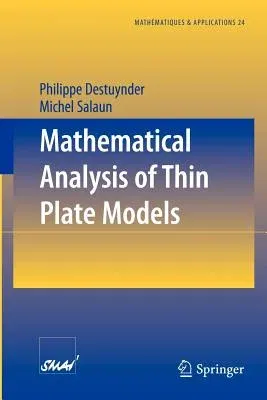Philippe Destuynder
(Author)Mathematical Analysis of Thin Plate Models (1996)Paperback - 1996, 26 July 1996

Qty
1
Turbo
Ships in 2 - 3 days
In Stock
Free Delivery
Cash on Delivery
15 Days
Free Returns
Secure Checkout
Part of Series
Mathématiques Et Applications
Part of Series
Lecture Notes in Economic and Mathematical Systems
Part of Series
Mathematiques Et Applications
Part of Series
Matha(c)Matiques Et Applications
Part of Series
Math Matiques Et Applications
Print Length
236 pages
Language
English
Publisher
Springer
Date Published
26 Jul 1996
ISBN-10
3540611673
ISBN-13
9783540611677
Description
Product Details
Authors:
Book Edition:
1996
Book Format:
Paperback
Country of Origin:
DE
Date Published:
26 July 1996
Dimensions:
23.39 x
15.6 x
1.35 cm
ISBN-10:
3540611673
ISBN-13:
9783540611677
Language:
English
Location:
Berlin, Heidelberg
Pages:
236
Publisher:
Series:
Weight:
358.34 gm

